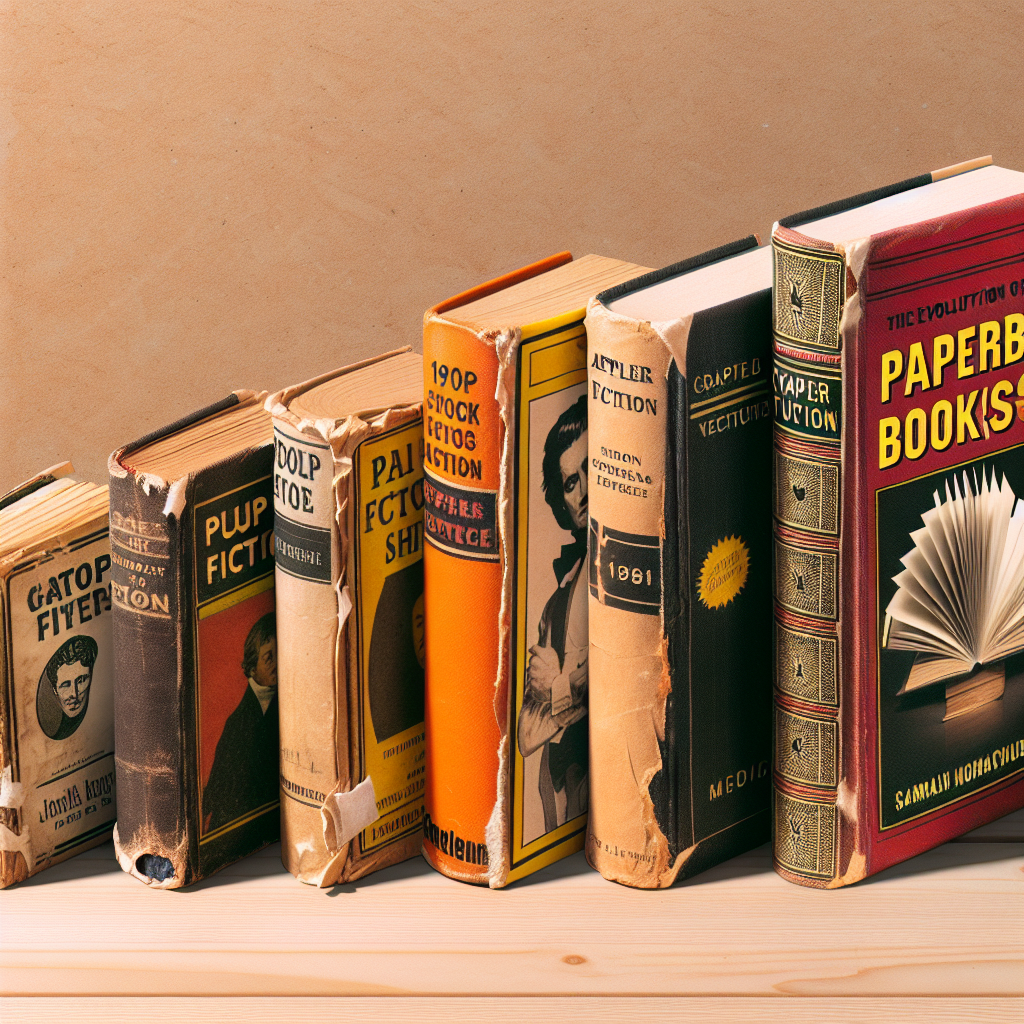Your cart is currently empty!
The Evolution of Paperback: From Pulp Fiction to Bestsellers

Paperback books have come a long way since their humble beginnings as cheaply produced pulpy fiction. Today, they are a staple in the publishing industry, with bestsellers being released in paperback format alongside their hardcover counterparts. But how did we get here? Let’s take a look at the evolution of the paperback book.
The concept of the paperback book dates back to the 19th century, when publishers began releasing small, cheaply produced books in response to the high cost of hardcover editions. These early paperbacks were often referred to as “penny dreadfuls” or “dime novels,” and were typically filled with sensationalist stories of crime, adventure, and romance.
In the early 20th century, the paperback industry began to take off with the introduction of the mass-market paperback. These books were printed on cheap paper and featured colorful, eye-catching covers designed to attract readers. Publishers like Pocket Books and Penguin Books became known for their affordable and portable paperbacks, making reading more accessible to the masses.
During the mid-20th century, paperbacks saw a surge in popularity with the rise of pulp fiction and genre fiction. Authors like Agatha Christie, Ian Fleming, and Mickey Spillane became household names thanks to their paperback bestsellers. Paperbacks were also popular among soldiers during World War II, with publishers releasing pocket-sized editions for easy transport.
In the 1960s and 1970s, paperbacks continued to evolve with the rise of the mass-market paperback bestseller. Authors like Stephen King, Danielle Steel, and John Grisham found success in the paperback format, reaching a wider audience and becoming household names in the process. Paperback bestsellers became a cultural phenomenon, with readers eagerly awaiting the next installment in their favorite series.
Today, paperbacks continue to be a popular choice for readers looking for affordable and portable books. While e-books and audiobooks have become increasingly popular in recent years, there is still a strong demand for physical books, with paperbacks remaining a staple in bookstores and libraries around the world.
The evolution of the paperback book is a testament to the enduring appeal of printed books and the power of storytelling. From pulp fiction to bestsellers, paperbacks have played a vital role in making reading accessible to all and shaping the literary landscape. So next time you pick up a paperback book, take a moment to appreciate its rich history and the journey it has taken to get into your hands.

Leave a Reply